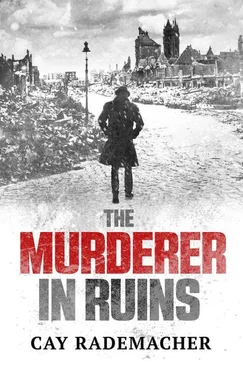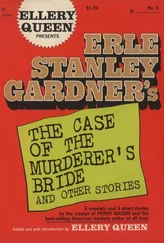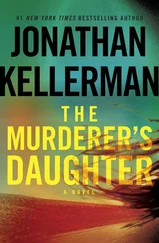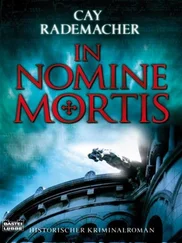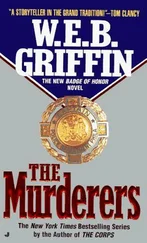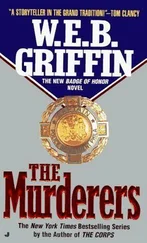Cay Rademacher - The Murderer in Ruins
Здесь есть возможность читать онлайн «Cay Rademacher - The Murderer in Ruins» весь текст электронной книги совершенно бесплатно (целиком полную версию без сокращений). В некоторых случаях можно слушать аудио, скачать через торрент в формате fb2 и присутствует краткое содержание. Год выпуска: 2015, ISBN: 2015, Издательство: Arcadia Books Limited, Жанр: Триллер, на английском языке. Описание произведения, (предисловие) а так же отзывы посетителей доступны на портале библиотеки ЛибКат.
- Название:The Murderer in Ruins
- Автор:
- Издательство:Arcadia Books Limited
- Жанр:
- Год:2015
- ISBN:9781910050750
- Рейтинг книги:5 / 5. Голосов: 1
-
Избранное:Добавить в избранное
- Отзывы:
-
Ваша оценка:
- 100
- 1
- 2
- 3
- 4
- 5
The Murderer in Ruins: краткое содержание, описание и аннотация
Предлагаем к чтению аннотацию, описание, краткое содержание или предисловие (зависит от того, что написал сам автор книги «The Murderer in Ruins»). Если вы не нашли необходимую информацию о книге — напишите в комментариях, мы постараемся отыскать её.
The Murderer in Ruins — читать онлайн бесплатно полную книгу (весь текст) целиком
Ниже представлен текст книги, разбитый по страницам. Система сохранения места последней прочитанной страницы, позволяет с удобством читать онлайн бесплатно книгу «The Murderer in Ruins», без необходимости каждый раз заново искать на чём Вы остановились. Поставьте закладку, и сможете в любой момент перейти на страницу, на которой закончили чтение.
Интервал:
Закладка:
‘The beating could be an indicator of violent anger, a desire for revenge, punishment, getting even.’
‘In which case the murderer already knows his victims. He’s killing them for some reason we don’t know. But in one case, he attacks in a particularly violent way.’
‘As a punishment.’
‘An old man, a woman in her mid-thirties, a woman of about twenty and a little girl of eight at most. Who could possibly have something against such a varied group of people? Some driven fanatic who wants to kill all his own family?’
‘If all the victims were related.’
‘Why else are there no missing person reports? Maybe the only relative who might report them missing is the killer himself.’
The psychologist looked out of the window. ‘The old man might be the father of both women, and the grandfather of the little girl, or maybe the grandfather of both her and the younger woman. But was one of the women the mother of the little girl? The older one might have been but you tell me the pathologist doesn’t think she’d ever been pregnant.’
‘She’d had an abdominal operation. We don’t know when. And until the autopsy we won’t know what the operation was for.’
‘If there was a 14-centimetre scar then it’s unlikely there’s too much intact down there,’ the psychologist said.
‘But she still might have been pregnant before the operation.’
‘Okay, if we accept that hypothesis, then we have an old man who could be her father and the grandfather of the child, and another young female relation who just might be the much younger sister of the older woman.’
Stave smiled for the first time since he’d walked through the practice door. ‘Let’s also assume that the means of death and the witness statement suggest that the murderer is male. And let’s assume he is a relative of the victims. Then the main suspect has to be the husband of the older woman and father of the child. That’s who we’re looking for.’
Burger-Prinz looked at him almost sympathetically. ‘Maybe you’ll find him in the rubble too, frozen to the ground with strangulation marks on his neck.’
The chief inspector inhaled sharply. He had had a vision, in which from now on he would find a corpse in the ruins every day: a girl, a boy, a woman, a man … and when this eternal winter finally came to an end, bodies that had lain undiscovered for months in cellars would thaw and the stench of corruption would bring the curious. And then the police.
‘If it really is some domestic drama we’re witnessing,’ the psychologist continued calmly, ‘then we’re missing a few characters. A grandmother. Another set of grandparents. The child’s father and presumed husband of the older woman. Maybe more children. Brothers and sisters of the grown-ups. Not to mention more distant relatives. There are a lot of potential victims, or potential killers.’
Stave sighed. ‘You mean, we’re going to find another couple of victims who fit the theory? And that only then can we be sure it is a family thing.’
Burger-Prinz shook his head. ‘When you’ve found your twentieth victim, then we can be reasonably sure that it’s not a family thing. But just a few more victims. A boy or a girl would fit as well as older people of either sex. A man or a woman. Think about it: you might assume a man between 35 and 50 could be the husband and father. A younger man could be the brother or even the husband of the younger woman. You can be sure of one thing. The next body you find will fit the theory. And the next. You’ll still know no more than you know now.’
‘What about the medallion?’
‘Did the killer leave it there as a marker?’
‘I doubt it. Too inconspicuous and not consistent. We’ve found two victims with no medallion, meaning that the killer didn’t leave any marker near them. Or that he left it so discreetly that we didn’t find it. Neither of those fits in with a murderer who leaves a marker with each of his victims. So the medallions must have belonged to the victims. To members of the same family. Maybe a family crest?’
‘Not the crest of any Hamburg family I know,’ the psychologist replied. ‘But then it doesn’t have to be a family crest.’
‘What else?’
‘Maybe some kind of religious symbol. A cross and two daggers, it’s not hard to see a spiritual connection.’
‘A sect of some sort? Like the Jehovah’s Witnesses? The old man was circumcised.’
‘Like the Jews. But the Muslims too.’
‘Jews or Muslims would hardly be likely to wear a cross.’
‘So Christians. Maybe all four of them belonged to the same religious community.’
‘But no other member of that community reported them missing? No pastor? No sect leader?’
‘Sects don’t often relish the glare of publicity or the attention of the police. Particularly after the events of recent years.’
Stave thought of the Jehovah’s Witnesses who had been reviled as ‘bible bashers’ and locked up in concentration camps. The past few minutes spent with the psychologist had taught him a lot, more than he had hoped for. But what was he to do with the theories and facts? How could he fit them in with the case? Were any of them even relevant? Or was he just on another dead-end trail?
‘Thank you for your time,’ he said with an air of resignation, and got to his feet.
Back at headquarters Stave strolled down the dimly lit corridor to his office but stopped when he reached the door. It was ajar, and he could make out two figures inside: MacDonald and Erna Berg. He made it his business to cough discreetly.
But neither of them turned round. His secretary was sitting at her desk, her face stained with tears. The young Brit was standing to one side behind her, bending over and whispering in her ear.
Stave was pleased that he didn’t have a clue what he might be saying. Nothing to do with me, he told himself. They seemed already to be having a crisis in their relationship even though they’d only been a couple for a few days. Stave decided to leave them to it for the moment and instead of going into his own office, he went along the corridor to see the boss. After all that’s what Cuddel Breuer had told him to do.
Stave went over their findings in his head again, coaxed himself to get on with it and told Breuer about his meeting with Burger-Prinz.
‘I have to admit you’re trying everything.’
Stave stood there silently, not sure if it was meant seriously or sarcastically. ‘I’m doing my best.’
‘Tell that to the mayor,’ Breuer said. ‘He wants us to go and see him. He’s not happy.’
Stave and Breuer took the Mercedes the few hundred metres to the city hall, even though Stave would have preferred to walk. It would have given him time to think.
The city hall with its impressive neo-Renaissance facade and its tall, tapering tower had not been damaged: a monument to the riches of trade and bourgeois pride standing there in a wasteland of rubble. A tram came round a corner and screeched to a stop. Tradesmen and postal workers climbed in. Passers-by rushed past as if they were heading for the nearest air-raid shelter, the sound of the sirens still in their ears.
The chief inspector followed his boss into the imposing building, down corridors half in darkness to the unheated office. Mayor Max Brauer greeted them. A massive, energetic man with a square jaw, grey hair brushed back and bright eyes. Sixty years old. Until 1933 he had been mayor of Altona, the Hamburg suburb that then had independent status, before being kicked out by the Nazis. He left for China then eventually the USA. He had returned a year ago and had been Hamburg’s mayor for the past three months.
Stave knew him slightly, because in December 1946 he had worked on a knife-fight between Altona black marketeers and had been going round looking for witnesses at the scene, Palmaille, the broad promenade along the bank of the Elbe. It had been a Sunday morning and he was ringing doorbells. Number 49 had a nameplate that said ‘Attic Apartment: Brauer’, but it was a common name and he thought nothing of it. It had been a bit of shock when he found himself face-to-face with the mayor.
Читать дальшеИнтервал:
Закладка:
Похожие книги на «The Murderer in Ruins»
Представляем Вашему вниманию похожие книги на «The Murderer in Ruins» списком для выбора. Мы отобрали схожую по названию и смыслу литературу в надежде предоставить читателям больше вариантов отыскать новые, интересные, ещё непрочитанные произведения.
Обсуждение, отзывы о книге «The Murderer in Ruins» и просто собственные мнения читателей. Оставьте ваши комментарии, напишите, что Вы думаете о произведении, его смысле или главных героях. Укажите что конкретно понравилось, а что нет, и почему Вы так считаете.
